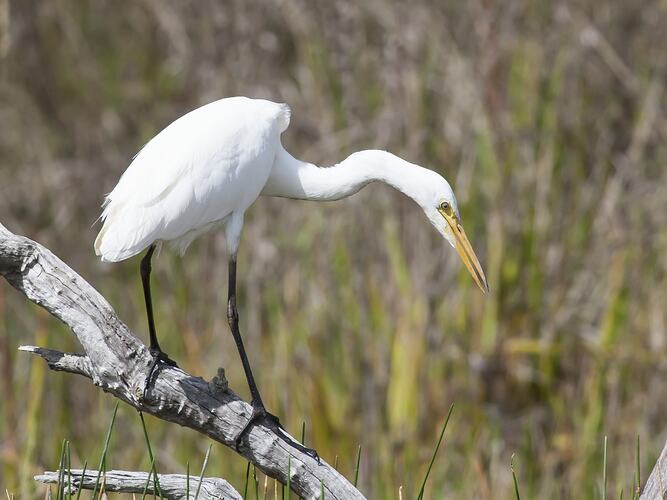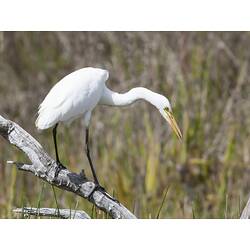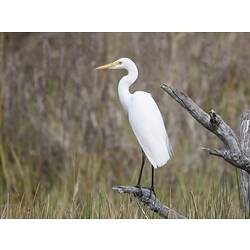General Description
A large egret. White, with a yellow bill. When breeding, it develops long breast plumes, a red bill and a green lores area between the eye and bill). When non-breeding, it can be distinguished from the larger Great Egret by its shorter, thicker, less-kinked neck and its shorter, thicker bill. The Little Egret also has a black bill.
Biology
Feeds on insects and other small creatures. Roosts in trees near water, often in groups. Breeds colonially in trees above water, including mangroves. The nest is a platform of loosely interwoven twigs. Lays 2-6 green or greenish white eggs (usually 3). Young can fly at 6-7 weeks, and leave the nest at around 10-11 weeks. Parents continue to supplement their offspring's diets for another 3 weeks.
Distribution
Across Australia.
Habitat
Freshwater wetlands, occasionally coastal areas.
More Information
-
Animal Type
-
Brief Id
A large white egret with a yellow bill, and long fine plumes extending beyond the tail when breeding.
-
Colours
White, Yellow
-
Maximum Size
70 cm
-
Habitats
-
Diet
Carnivore
-
Commercial
No
-
Conservation Statuses
CITES: Not listed, FFG Threatened List: Critically Endangered, EPBC Act 1999: Not listed, IUCN Red List: Least Concern
-
Taxon Name
-
Common Name
Intermediate Egret
-
Kingdom
-
Phylum
-
Subphylum
-
Class
-
Order
-
Family
-
Genus
-
Species Name
intermedia



